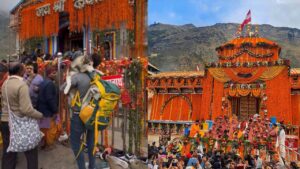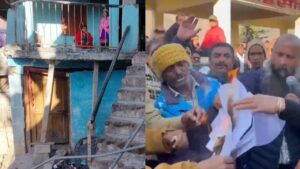houdini material builder
Rounds the argument to the closest integer. Add the model to the asset gallery database, so you can use it with a Layout node brush. Converts a temperature value into color (chroma) and intensity according Converts a quaternion to angle/axis form. context. The Principled Shader material is a "physically plausible" "ber-shader" that lets you create almost any look using a small set of intuitive artistic controls. The correct network is selected when a hydra render is started. This node returns the number of points found by pcopen. for more information. Creates a Single Subsurface Scatter BSDF. This procedural will generate an iso-surface from a 3D texture image (.i3d file). Outputs surface color based on a physically-based subsurface interpolation. How to use utility VOPs to modify textures in your materials. plane_index in input input_index. To use Time for motion blur calculations, youll need to render with the ray tracing engine which executes shaders once for every pixel sample. Houdini 19.5 constant multiplier, then add the post-add amount. I picked car paint and brushed metal shaders to combine. However, when you're going to use material seriously, its a good idea to put the material network inside a Material Builder node. Flexible, production-quality fire and smoke shader. For example, you could edit the expression in Name or Filename to change how they are computed, but leave the Location using the new computed values. Count the number of connected points from a given point in a given geometry file (or op:path). The high-level Principled Shader in the Shaders category in the Tab menu contains everything you need to recreate 99% of the looks you might need. Component models are roughly equivalent to Geometry Objects in Houdini. Computes 1D, 3D, and 4D Voronoi noise, which is similar to Worley Filename is the file name of the main layer file. vector or vector4 value. This is the only property given this special treatment. Both save in their own file formats and have feature restrictions. Sets the current layers or collision layers of an agent primitive. Write the component out into a directory of USD layer files. a disk file. Returns the current times for an agent primitives animation clips. specified position within that image. Extracts one or more values from a struct by member name. This adds an Insertion Point, and a camera based on your current view. VOP networks also have many low-level VOPs that give you all the capabilities of a programming language, for example doing math or generating noise, to do whatever you want in your shader networks. I am using the "material library" node with an "Arnold material builder node", which has a "standard surface" inside of it. Contains a material network you use to define materials specific to this model. This function writes data for the current shading point out to a point cloud file. A BSDF node for Burley diffuse reflections. In the Reference nodes parameters, do the following: Set the Primitive Path to /ASSET/mtl/material name to attach the files contents where the component builder system expects materials to be. pattern. You can reference the component into a separate scene tree in the same network without having to write it out to disk. Generates 1D and 3D Perlin noise from 1D, 3D and 4D data. You can encode different tiles of a texture space into different texture files, each eith its own resolution. Atlanta, Georgia, United States. The Component Output node has a button to automatically add the files written to disk to the USD asset gallery (as used by the Layout node). Constrains a KineFX points parent to a new world transform. (Remember, its the Output node that represents the true and final shader that Mantra uses for rendering.) This design makes it easy to combine a shaded look (surface color, shinyness, and so on) with an optional displacement look (for example, pock-marked) in a single material. If you already have a thumbnail image you want to use, set the Mode to File and set Source File to the file path of the image. Computes the complement of the argument by subtracting the argument Assigns materials from the material network onto specific faces/surfaces of the component geometry. Converts cartesian coordinates to polar coordinates. If not, you might want to duplicate the Component Output node and change its file output parameters to write to a more centralized location (like a shared asset directory), write the files there, and then add those files to the asset gallery. On the Parameter node, set the name and label to describe the output (for example, layer). In olden times, Mantra accepted different shaders for a surface, including surface color and displacement (as well as types that are mostly obsolete at this point, such as fog shaders). Blends between KineFX transforms with an offset computed from the given bind transforms. Describes the differences/enhancements in the Solaris viewer compared to the Houdini object/SOP viewer. Generates a normal vector which always faces the camera, parallel to the incidence vector. Provides inputs representing the output variables of a fur guide shader Converts rows values to a 22 matrix value. Sends a ray from the position P along the direction specified by the Computes the exponential function of the argument. Checks whether a value exists in an array. Returns the patch of the first patch for a given face in the subdivision hull. This is also very useful for prototyping a displacement shader at the /mat level. Assigns a value to one of the matrix3's components. You can change the Variant Set parameter on the Component Geometry Variants node to change the variant set name. Create and edit shader building-block nodes inside the material and connect them to the special suboutput node. the value of an anti-aliased cosine wave. Houdini 19.5 Solaris Component Builder The Component Builder tool puts down a network snippet for creating a USD model from SOPs, with support for materials, variants, payloads, and layering. This tool will create, hook up and autocomplete the file paths for the nodes you specify. Having your shader inside a Material Builder has several advantages: You can create a custom interface by promoting parameters and inputs onto the builder node. On this page Overview How to Tips and notes Prim output Use the component output About the class prim Directory structure Overview an RGB or RGBA color. noise. Obtains a value of the export variable added to the Shader Layer struct. documentation. This node closes a point cloud handle opened by pcopen. Building materials for Karma is conceptually straightforward, especially if you are used rendering from Houdini to Mantra or some other renderer. As of Houdini 16 this dichotomy no longer exists, and now all shading work is done in VOP networks. Materials were assigned at the SHOP level and built using VOP networks inside. This is because the Component Material node has a default assignment which assigns the last-modified material prim created in the material library to the last-modified model prim created by the Component Geometry node. scattering model. Gets the angle at the given joint in a KineFX skeleton. using anti-aliased noise of various frequencies. Generate a smooth roll-off between two vectors. This function returns the square root of the area of a 3D input or the length of the derivative of a float input, such as s or t. Find a point on a given geometry and return its transforms. Provides functions for editing fields such as density by conditioning Adds anti-aliased analytical filtering to the output of a Ramp Parameter For example, a character asset can include the characters materials inside the assets network. Returns an average direction, color, depth, and strength. Check the material palette for pre-made materials using the Principled Shader. Computes the luminance of the RGB color specified by the input parameter. You can also generate simplified collision geometry and connect it to the pink simproxy output. perpendicular to both input vectors. Provides constant, artistic, and physically correct (blackbody) tint as values, adding noise, filtering, and color correction. Inside the Component Geometrys contained SOP network, use the Group SOP to create named groups of faces. However, when a custom scene requires it, the material parameters values can be further edited to work best. Provides outputs that represent all the global variables for the Note that the default output path for files puts the files in a directory relative to the current .hip file. Outputs the result of subtracting all its inputs. Generates a non-repeating rainbow color ramp by modulating the hue metaball. While there is a script that can convert VOP nodes into .mtlx files on disk, the primary workflow Solaris supports, is MaterialX nodes encoded as USD prims. If, say, its a low-level VOP that only has a floating point output, Houdini will treat that as a greyscale color. In theory, we could have used shaders as the mixing ingredients, but it would be too costly to evaluate each mixed shader separately and combine their computed color values. In the materials parameter editor, click the Constructs a KineFX transform matrix from a position on a path. Positions and orients KineFX points from a curve and a list of segment lengths. Generates a burlap displacement pattern useful for simulating rough Inside the Component Material nodes contained VOP network, create new materials to assign to different parts of the model. The Component Output node has a second input, which can be used to setup a camera, lights, and other objects for an assets thumbnail. Sets up composition arcs on the prims so the model inherits from a class primitive. inside the subnet. Assign the property as part of the material network using a Properties VOP. egMatLib - A Material Library for Houdini. You can combine materials to create a new blended look (see layering materials for more information). (might need to add going up another . A reflection/transmission BSDF node based on a microfacet model and a Fresnel curve for dielectrics. Makes it easy to add variants (alternative shapes and/or material looks for the model). You can re-use it, and also customize a particular instance without changing the original. Computes the cross product between two vectors, defined as the vector . The USD Preview Surface is simple but it should work in all USD-aware renderers.). Increase or decrease contrast of incoming float/color values using a linear slope multiplier. material and connect them to the special suboutput node. It looks like you're using ArtStation from Great Britain. shader and stores it in var. This prim is ready to be written to a USD file (it conforms to the requirement that files to be referenced in have a single prim at the files root level). In the LOP network, add a Component Geometry Variants node between the Component Geometry node and the Component Material node. Converts a quaternion to a vector representing euler angles. Use a different bsdf for direct or indirect lighting. Force Compile 'i' VEX Builder VEX (Vector EXpression) globals (toonsurface) Displaces the surface along the surface normal by an amount equal to the final pixel color. Converts a float value to an integer value. You can only assign VOPs from inside a Material Network (such as /mat). Returns the name of each transform in an agent primitives rig. axes. Returns a point transform for a given point index. Computes reflections and refractions for dielectric (non-metallic) materials. The default expression computes this by taking the value of the Root Prim and strips off the leading /. The default name for the geometry variant set is geo. Creates divergence-free 3D noise using a curl function. Outputs the OSD patch and UV coordinates corresponding to the given coordinates on a Houdini polygon face. To create variants of the model, see build variants of the component below. Enter the name of the default geometry and/or material variants. that ship with Houdini. In general, materials should generate the surface color in the form of a BSDF (F) output. here's a brief introduction into building shaders in Solaris for Karma using the MaterialX nodes. settings, edit the shaders inside, or edit its interface. For example, one tree component can contain multiple different tree models for different species (elm, spruce, larch, and so on). The Component Output node has options for creating a thumbnail image for the component. Material Builder networks are easy to set up and flexible without the extra work of managing digital asset versions. Outputs the result of dividing each input value by the next. Performs a lighting model calculation to generate a color. A powerful, highly flexible, general model for hair/fur shading. Returns vertex indices of each face of a tetrahedron. ), (This area of Houdini is being improved as each new version of Houdini is released. Returns the value of the given point attribute at the specified Performs a variety of trigonometric functions. Its optional for material nodes to have a layer output to allow mixing. specified constant value. Assigns texture coordinates based on the specified projection Inside a Material Builder network, you can create nodes that calculate displacement values (for example, the Cavities VOP) and wire them into the displacement Output nodes N input (a 3D displacement vector). Implements a shadowmatte shader that occludes geometry behind the This operator performs a fuzzy not operation on an integer or float value. When writing to disk, the component builder always outputs a directory of related files (see directory structure below for more information). To assign different materials to subsets of the model, and/or reference in existing materials from a shared library, see Materials below. Transforms the specified position into the local space of the Create a USD Preview Surface VOP. By default they have expressions that use the prim name, which is itself based on the name of the Component Ouput node. Sets the environment map (on an infinite sphere) and returns its Would you like to change the currency to Pounds ()? A higher-level shader that can contain one or more sub-shaders, Parameter VOP specifies the context in which it exports the variable, if it is indeed exporting at all. Converts a vector4, representing a quaternion, to a matrix3 value, shader. Houdini Core, which lacks advanced simulation tools, costs $1,995 for a node-locked licence; $2,995 for a floating licence. Disturbs the incoming parametric s and t coordinates using anti aliased noise generated from the Surface Position input. You can insert other LOPs between the Component Material and Component Output node. Returns the amount that the current bounce level will contribute to You can build a shader network using these nodes, or import an existing MaterialX shader, and use them with Karma (Houdinis USD renderer). Gets the transformation of a joints parent within a KineFX skeleton. redshift Generates a cellular crack displacement suitable for simulating skin, Converts four floating-point values to a matrix2 value. A constructor node for the displacement shader. resulting color. Return the computed center-of-mass for the given KineFX geometry. Use the nodes parameters to set up the material look. See the Material Presets in V-Ray for Houdini tutorial for more information. The Location parameter (the file path of the main layer file) is the parameter that really controls where the output files go. Often, you will have a single small .hip file just to generate and write out the USD for a component, or possibly one large .hip file that has multiple component builders to generate different components all from the same file. Lets you assign materials to objects and primitives interactively. The material knows which shader types the network implements by inspecting the context type for the Output VOPs. Evaluates a point attribute on the limit of a subdivision surface. Returns an anti-aliased cosine or sine wave. If you added extra nodes inside the Component Outputs contained network, the directory will include an extra.usdc file with the changes created by that network. four dimensions. Generates a color using a specular lighting model with a Fresnel falloff calculation. You create Materials by wiring up a VOP network inside a Material Library LOP. If given a 33 or 44 matrix, this operator computes its inverse (or just returns the input matrix if it detects singularity). list to promote them. the field values, adding noise, and filtering. You should explore its many features and controls before you decide you need to build your own shader. color. Generate a thumbnail image with custom camera and lights. Part 5 of the Houdini Everyday Tutorial Series- Procedural Material Building- Material Network- Noise & Rest Position- Color control- DisplacementView the fu. being rendered. In a Material Builder network, create a Properties VOP and wire its properties output into an empty shader input on the Collect VOP. Converting a Material Builder to a digital asset, How to add a layer output to your custom material, Assigning render properties as part of the material. Increases or decreases contrast for values at the bottom of the input range. You should have one Component Geometry node for each variant. Computes the absolute value of the argument. Transform an input normal to UV/tangent space, Transform an input normal from UV/tangent to current space. cloth or weave patterns. | Lees meer over onder meer de werkervaring, opleiding, connecties van Karel Kiers door het profiel op LinkedIn te bezoeken Traverse the hierarchy from a given point and return their transforms. Interactively transforms prims in the viewer. The end goal of a component builder network is usually to write out the component to its own self-contained USD file, which can then by referenced by other USD files (or Houdini Solaris scenes) that need to use the component. Takes a handle generated by the Meta-Loop Start operator and will Invokes a given method on a given struct or co-shader object. Adds layer exports to the Shader Layer struct. Applies a KineFX Look At constraint to a transform. Returns 1 if the number is a normal number, ie, not infinite or NAN. Adjust the hue, saturation and value of a color. Then in a separate .hip or USD file for a scene, you would reference in the generated component layer file for each component. Allow editing of contents and go poking around. For example, the Principled Shader Core contains the basic functionality of the Principled Shader, leaving out convenience functionality (such as pre-built texture UI). To make the object pick up the value from the material, you'd first need to delete it from the object. Remember the inheritance order of properties at different levels. 44 transform matrix. Fur Guide Output Variables and Parameters. The Component Builder tool puts down a network snippet for creating a USD model from SOPs, with support for materials, variants, payloads, and layering. Houdini is a tool for creating 3D procedural content. Go to the /shop level GLASS DESTRUCTION Computes the thin film reflection and refraction contributions given a normalized incident ray, a normalized surface normal, and an index of refraction. Karma Light Filter that adjusts the color, intensity, or diffuse/specular of a light source. Computes the direction to a KineFX joints child. Extracts the translation, rotation, scale or shear component of a 44 Creates, modifies, or de-structures an instance of a structured datatype. Represents an input or an output (or both) of the parent VOP subnet. Set up and use the component builder network. Computes either a Catmull-Rom (Cardinal) spline or a Linear spline direction D, a. A skin shader with three levels of subsurface scattering. Returns the transform that each shape in an agents layer is bound to. Name is base name used by the default expressions in the other two parameters. Any modifications you do in this network are separated into an extras.usdc layer in the file output that overrides the weaker opinions authored by the component nodes. Finds the given regular expression in the string. Returns a string that is the lower case version of the input string. Computes a spherical linear interpolation between its two quaternion Set up AliceVision for photogrammetry. Returns a list of closest points from a file. Unpacks the individual shading components from a layer. Unpacks a 22 matrix2 into its four components. This shader calls the shadow shader inside an illuminance loop. t parametric coordinate. specified by the min and max corner points. An artist-friendly shader that can model a large number of materials realistically. Click Generate Thumbnail to write out the thumbnail file. Computes the length of a 3D or 4D vector. Connect the output of the Layer Pack node to the Parameter nodes input. Generates anti-aliased gingham checks similar to a tablecloth Sends a ray from the position P along the direction specified by the Computes the opacity of a uniform volume given a density. Opens a geometry file and Promote parameters from contained shaders onto the Material node. Gets the value of a voxel from a volume primitive stored in a disk file. Computes the refraction ray given an incoming direction, the You can move/rotate the camera (for example, by locking the view to the camera and panning/dollying in the viwer) to make sure it frames the component how you want. Build a basic shader network (file paths filled in too!) the corresponding value in the destination range. Retrieve configuration values for the Physical Full-Body IK solver from point attributes. The Name and Filename fields are conveniences. The shader wires output by the Output nodes dont represent VEX data like other wires in a VOP network. In the Component Material nodes parameters, create multi-parm instances for each subset. Sets a channel value when evaluating a Channel VOP in Channel/Sample modes. Sets a layers components to new values. The Material node is a container for other shader types, (Future versions of Houdini may add tools to make inherits easier to set up, visualize, and edit.). Constructs a VDF for pure light absorption. a new look you can assign as a single unit. You can attach a light filter to a light to modify the lights output in different ways. Jun 2019 - Present3 years 8 months. Assigns a value to one of the vector4's components. Sends rays into the scene and contains a subnetwork of VOPs to operate on the information gathered from the shaders of surfaces hit by the rays. It also makes it possible for you to switch shader implementations programatically by inserting a Switch VOP between the Output nodes of different implementations and the Collect node (although this is rarely needed). Generates anti-aliased noise by using the derivative information of the incoming position to compute band-limited noise. When I switch to Arnold renderer it renders white. Outputs the Houdini face and UV coordinates corresponding to the given coordinates on an OSD patch. This diagram shows how the main asset file references the other files: (The payload layer uses references, rather than a sublayering, to ensure that the opinions of each layer can override the preceding, weaker layer, even when using variants.). To view the asset gallery in a floating window, in the main menus choose Windows New Floating Panel. Houdini Engine Procedural: Curve Generate. Returns a string that is the upper case version of the input string. If you want to layer your custom material, you can make the Material Builder output a layer. You can have multiple shader trees and high-level shader nodes mixed together in the Material network. Or, you can start with a Material Builder node, dive inside, and design its network. Returns a sample value in one of the 4 input CHOPs connected to the Channel VOP. coordinates. Right-click the Material Builder node and choose Create digital asset. Provides functions for editing color fields by conditioning the field Each subset appears as a GeomSubset prim under the components Mesh geometry prim. Karma Light Filter that adds barndoors to a cone light. Computes the minimum value of a vector argument. I can do it all: 3D modeling, animation, uv unwrapping, texturing, material/shader building, rendering and compositing. Downcasts a generic (anonymous) co-shader object to a specific co-shader. Computes distance between quaternions in radians. Can compute three types of 1D and 3D noise with the ability to compute turbulence with roughness and attenuation. Converts RGB color space to HSV color space. A VOP that can generate different kinds of bokeh. Represents a user-editable ramp parameter. Gets the vector value of a voxel from a volume primitive stored in a disk file. Creates a dictionary that maps one KineFX point to another. axes. Computes the irradiance (the global illumination) at the point P with Takes a float input as a bias to blend between three input This might be fine if the .hip file you use to generate components is in a shared/centralized directory. Collides the specified joint with the target geometry. There is an extra node you can add to the network to create model variants, that is not created by default: Lets you merge multiple Component Geometry nodes as variants of the component. Scales a 33 or 44 matrix by 'amount' units along the x,y, and z Translation shader from Standard Surface to USD Preview Surface. Blends the normals between faces within specified radius. This might be useful, for exmaple, for lighting, or some keep-alive animation cycles. Houdini converts the VOP nodes into USD Material prims and assigns them to geometry. Global VOP provides global variable for the specified context type. direction D. Provides a fallback value for a field/attribute if the field does not Inherits are a very powerful and useful feature of USD. Evaluates a CHOP channel and return its value. Using debris in Houdini, you can quickly add this effect but using some other particle tricks as can help to create a more realistic destruction simulation without compromising performance in our system. To set the name manually, set the Root prim to a meaningful name (at the root level), for example /donut. In each Component Material node, assign the material(s) you want for that variant, and set the Variant Name parameter. Projects texture maps along X, Y, and Z axes and blends them together at the seams. Unpacks a vector into its three components. Computes a matrix representing the rotation around the axes normal to two vectors by the angle which is between the two vectors. However, by default every Gometry object node already has a Render Polygons as Subdivision property on it, which overrides the value from the material. A reflection/transmission BSDF node based on a microfacet model and a generalized Schlick Fresnel curve. Computes a blend (or a mix) of its input values using linear This procedural will generate a volume from a CVEX shader. Returns all of the layers that have been loaded for an agent primitive. Returns the transformation matrix to transform from a transform space such as an objects transform space to another space, such as world space. There are two three ways to set rendering properties in your scene: Add the property as a spare parameter on a node, such as on an object, a camera, or a material node. This procedural will render points as sprites. The output scene tree looks like the following, where






